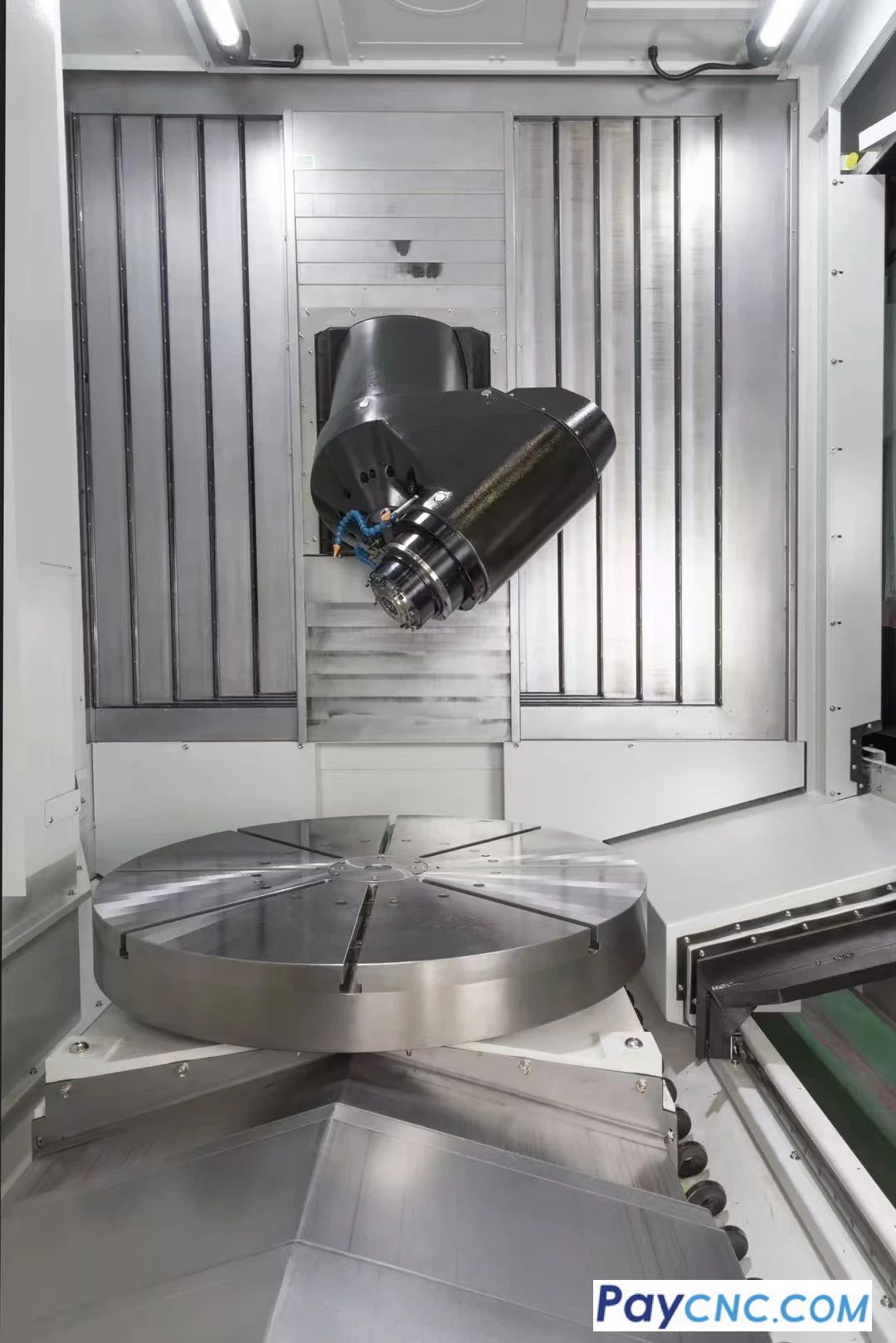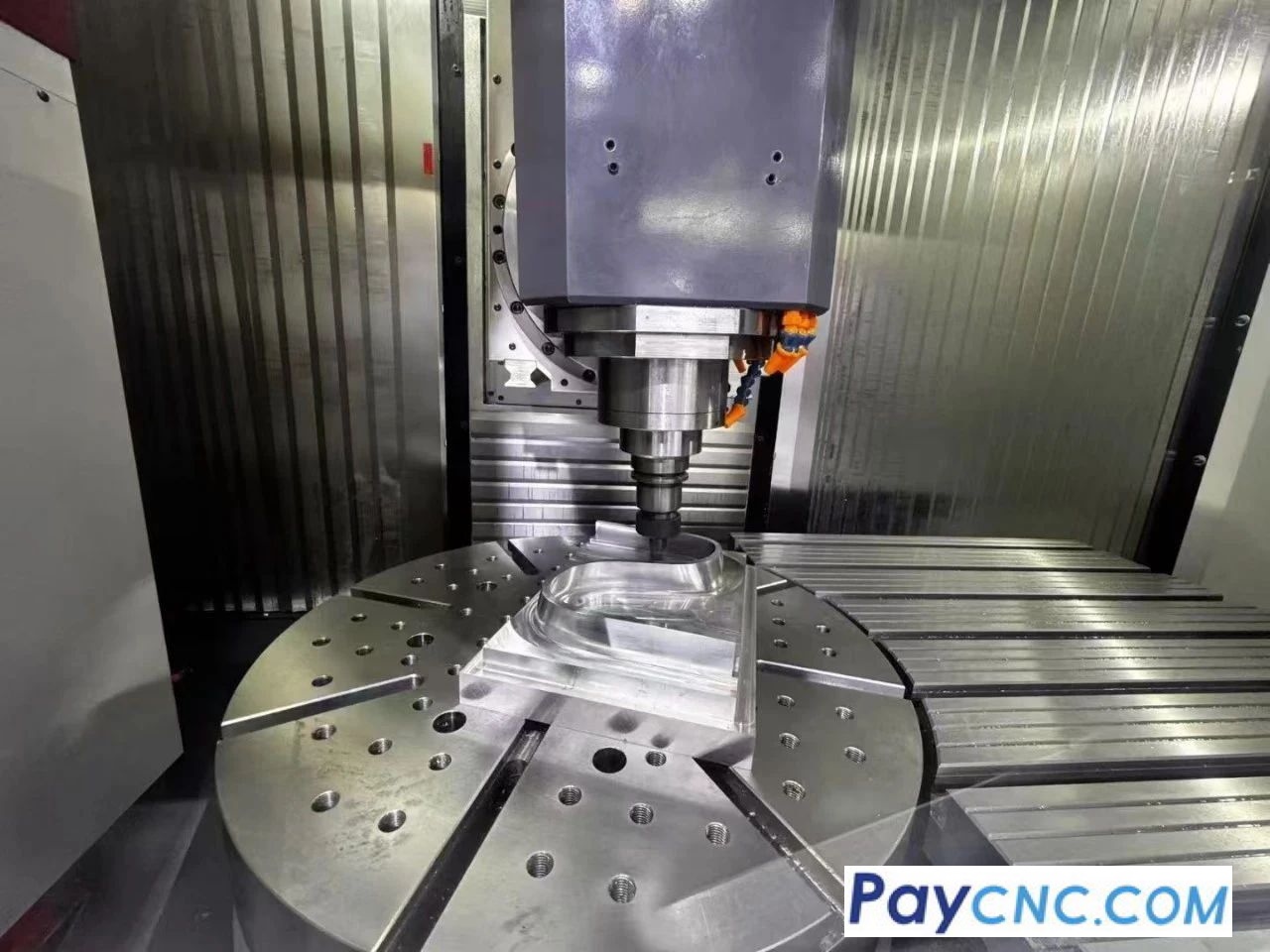In the field of five-axis cnc machining, the two mainstream structural types —
spindle-tilting and table-tilting (cradle-type)
— significantly impact machine performance and machining outcomes. How should you choose based on your specific needs? This article offers a detailed analysis of the core differences between the two structures.

Core Differences: A Comparison Across Five Dimensions
-
Spindle Rigidity
-
Spindle-Tilting Type: Rigidity significantly decreases during tilting motion, which affects stability during heavy cutting.
-
Table-Tilting Type: Spindle remains fixed, so rigidity is unaffected by movement, offering better stability.
-
-
Machining Efficiency
-
Spindle-Tilting Type: For the same tool tip displacement, the spindle must swing through a larger angle (lever principle), resulting in relatively lower efficiency.
-
Table-Tilting Type: Movement is more direct, resulting in higher efficiency.
-
-
Impact of Tool Length on Accuracy
-
Spindle-Tilting Type: Tool length = arm length! Error = arm length × tilt angle. The longer the tool, the greater the magnified error.
-
Table-Tilting Type: Tool length is independent of swing mechanics, so it does not affect swing error, making it more forgiving for long tools.
-
-
Types of Machining Error
-
Spindle-Tilting Type: Causes both positional errors and form errors, as spindle tilting shifts the feed direction away from the tool center, possibly producing wedge-shaped holes.
-
Table-Tilting Type: Only produces positional errors from table movement; the spindle feed direction always aligns with the tool center — no additional form errors.
-
-
Effective Machining Range
-
Spindle-Tilting Type: Tilting “consumes” travel distance, so the five-axis machining maximum part diameter is smaller than its three-axis capacity.
-
Table-Tilting Type: Tilting the table does not affect horizontal dimensions, so the five-axis range is generally the same as three-axis (interference permitting). Typically, the cradle type offers a larger machining envelope for the same travel range.
-
???? Summary: Advantages and Limitations
|
Feature |
Table-Tilting Type (Cradle) |
Spindle-Tilting Type |
|---|---|---|
|
Spindle Rigidity |
✅ Excellent (fixed spindle) |
⚠️ Reduced during tilting |
|
Machining Efficiency |
✅ Higher |
⚠️ Relatively lower |
|
Long Tool Accuracy |
✅ Unaffected by tool length |
❌ Error magnifies with tool length |
|
Machining Error |
✅ Only positional error |
❌ Positional + form error (e.g., wedges) |
|
5-Axis Machining Range |
✅ Usually larger (same travel) |
⚠️ Reduced range due to tilt consumption |
|
Heavy Workpiece Suitability |
⚠️ High fixture demands; very heavy parts may not rotate |
✅ Better for very large/heavy parts |
???? Key Insight:
The cradle-type table-tilting structure generally provides superior rigidity, efficiency, precision stability, avoidance of form errors, and effective working range. It is the ideal choice for precision and high-efficiency machining.
The spindle-tilting type is irreplaceable when machining extra-large or ultra-heavy workpieces, as it avoids the need to rotate the heavy worktable or part.
???? Selection Recommendations
-
For high precision, high efficiency, and complex surface machining:
Prioritize table-tilting (cradle-type) machines — especially suitable for mold making, aerospace precision components, and medical devices.

-
For oversized or heavy-duty parts (e.g., large castings, energy equipment):
Spindle-tilting machines are often the more practical choice, though you’ll need to accept compromises in efficiency, accuracy (especially with long tools), and usable range.

-
Always request an interference diagram:
Regardless of structure type, the actual usable range of five-axis machining is heavily limited by mechanical interference. Requesting a detailed five-axis machining space interference diagram from the manufacturer is essential for correct machine selection.
The structure of a five-axis machine defines its DNA.
Understanding the core differences between spindle-tilting and table-tilting designs — and evaluating your product requirements (size, weight, precision, speed) — is the key to turning high-end equipment into a tool for real performance improvement.
Technology defines your ceiling. Choice defines your starting point.
 USD
USD




